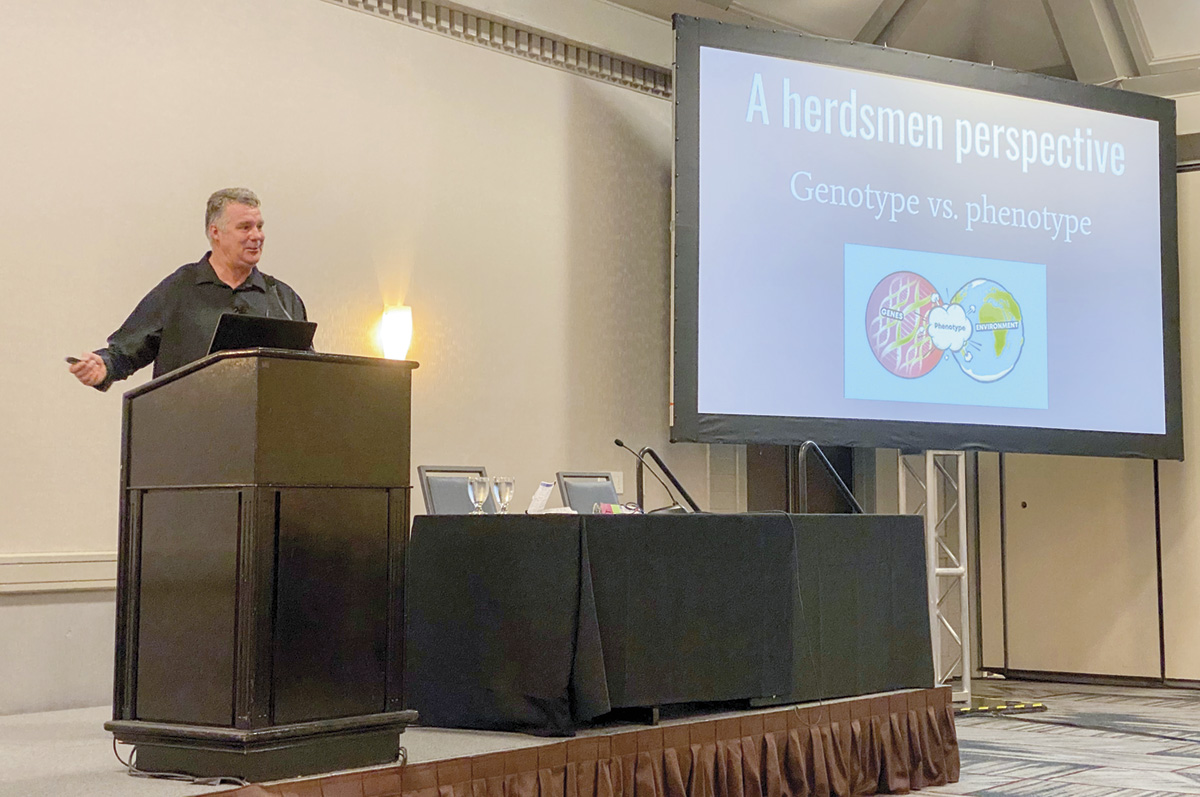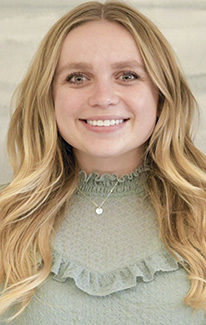Producers, professors and industry professionals gathered in Salt Lake City, Utah, on Nov. 14-16 to discuss the latest developments in dairy cattle reproduction at the Dairy Cattle Reproduction Council (DCRC) annual meeting. An agenda packed with presentations discussing reproductive health, new approaches to management, beef-on-dairy markets, fertility and calfhood health effects on reproductive performance kept the more than 200 attendees busy over the three-day event.
Frank Mitloehner, director of Clarity and Leadership for Environmental Awareness and Research (CLEAR) at the University of California – Davis kicked off the conference with a passionate presentation discussing methane emissions from the dairy industry.
“Methane is not just reduced; methane is also destroyed,” Mitloehner said. “That does not find its way into mainstream reporting. My lab (CLEAR) has put it into the mainstream and been criticized repeatedly for it, even though this has nothing to do with politics. This is physics. This is chemistry. This is science.”
Mitloehner cited recent studies by both CLEAR and the Food and Agriculture Organization (FAO) discussing the differences between carbon dioxide emissions and methane emissions. He stressed the importance of dairy producers understanding the gravity of this conversation and noted that reproduction plays an important role – breeding more efficient animals can aid in methane reduction.
William “BJ” Jones of Center Hill Veterinary Clinic gave his retiring remarks as president of the DCRC and passed the title to Tracy Burnett of the University of Guelph. Burnett addressed attendees with an optimistic outlook for the dairy industry in 2024.
Julio Giordano presented studies done at Cornell University segmenting cows into reproduction protocols based on signs of estrus or genomic value.
“Are all cows the same?” Giordano asked. “From a reproductive physiology perspective, are all cows the same? No. Why do we treat them as if they are all the same?”
Giordano acknowledged the ease and effectiveness of blanket reproduction protocols but asked listeners to think about putting cows in different silos when breeding. If a cow shows signs of estrus during the voluntary waiting period or shows signs of estrus during synchronization protocols or has high genomic value, Giordano and his team enrolled qualifying cows into different protocols and found an interesting result: comparable pregnancy rates between groups.
Matthew Lucy addressed work being done at the University of Missouri surrounding the impact of stress and strain on reproductive health. Lucy and his team have dug into factors surrounding metritis and inflammatory memory – a process in which cells resolve infection and prepare for the next. Lucy’s team is studying inflammatory memory in uteri alongside cases of metritis.
“If you’ve ever gotten a cut, that tissue will have a memory of that cut,” Lucy explained. “The tissue will remember that, so the next time you get the infection, it will respond more actively and more acutely – that’s inflammatory memory. That’s all fine and good on the skin’s surface. But if we’re looking at a uterus that’s expecting a conceptus, there could potentially be a consequence of that inflammatory memory. The fact that it does push really hard on disease can cause issues with fertility because this tissue has a memory of prior infections.”
Kee Jim of Feedlot Health addressed the popular beef-on-dairy discussion and brought some interesting facts to the table as a cattle buyer.
“A question or comment we get from cow-calf producers is that, ‘This is a bad thing for me because we’re going to get more dairy animals,’” Jim said. “But the dairy cow only has one calf per year. It really influences the breed composition of the cows coming from the dairy industry, but it doesn’t influence the number of feeder cattle. We have just as many beef-on-dairy cattle as were formerly straight Holstein steers.”
Jim noted that consumers have consistently been paying top dollar for high-marbling animals – and encouraged an alignment in the supply chain to benefit all players.

Siebren Jacoby gave his perspective on dairying in 2023 during the November conference. Photo by Matti McBride.
Siebren Jacoby of Rockin’ S Dairy, Modesto, California, opened day two of the annual meeting with a “herdsman’s perspective” presentation. Jacoby – who immigrated to California from Holland – gave a unique outlook on managing a modern dairy. He compared dairying in California to dairying in Holland and dove into factors surrounding the U.S. dairy industry’s cull rate – encouraging the industry to strive for a more “economically stable” cull rate of 30%.
Jacoby touched on calf health, animal welfare and the influence of “the soccer mom” on his management decisions. Using genomics, he’s seen improvements in his herd regarding health and fertility but hopes to see the industry put more of an emphasis on the two traits – particularly when it comes to indices.
“Selection is the quickest route to success,” Jacoby said. “Know your race, build the best cow for the race.”











